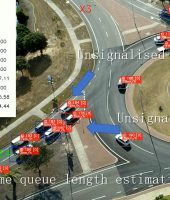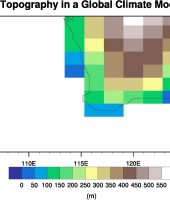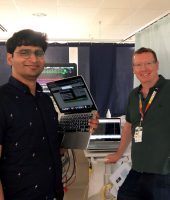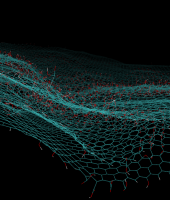Fighting Fungus: Using Genomics to Combat Wheat Diseases
Wheat is one of the world’s most important staple grains, and meeting the projected demand for it in the future is a significant challenge. Fungal diseases that affect wheat grain yield are a big part of the problem. Research into the control and management of crop fungal pathogens is critical to safeguarding this food source into the future.
Dr Paula Moolhuijzen and Dr Caroline Moffat from the Centre for Crop and Disease Management (CCDM), a purpose built centre co-supported by Curtin University and the Grains Research and Development Corporation, are using the Pawsey Supercomputing Centre computer, Magnus, to develop and analyse new fungal pathogen genome resources to better understand the underlying molecular mechanisms used by pathogens to infect and damage wheat.
The Challenge
Yellow spot, a global fungal wheat disease, is responsible for yield losses and control costs estimated at over $600 million annually in Australia alone. The fungus, Pyrenophora tritici-repentis, has evolved into different races around the world, making combating it extremely difficult.
Until recently, Australian researchers had limited genomic resources to study yellow spot. Only a single American reference genome of Pyrenophora tritici-repentis was available, which had been generated using older sequencing technology, and it was surprisingly different to the isolates found in Australia.
CCDM researcher’s Drs Moolhuijzen and Moffat wanted to create new, high-quality reference genomes for yellow spot isolates across Australia and other agricultural areas to progress their research. “High-quality reference genomes are needed to identify key variations between different isolates and races of this pathogen. We now have the gene sequencing technology available to create more complete genomes for more comprehensive comparisons. We also wanted to create genome resources relevant to the southern hemisphere and the wheat growing areas of Australia,” says Dr Moffat.
Dr Moolhuijzen adds: “Sequencing individual isolates and comparing them lets us examine the genetic basis of this disease and pinpoint the evolution of different modes of action. This however, means comparing millions of pairwise alignments between different genes and features, and a high-throughput data processing environment is needed for this.”
The Solution
Drs Moffat and Moolhuijzen used Pawsey’s supercomputing facilities to comparatively analyse 12 different isolates from five different race groups and determined the sequence variability between them.
“On a single computer, an in-depth analysis could only be done on a subset of genomic data or a targeted
region, because a job of this type for a whole genome would take too long to finish,” explains Dr Moolhuijzen. “But with Pawsey we could compare entire genomes, millions of combinations, that could run over 400 nodes on Magnus in under five hours. If we didn’t have Pawsey resources it would take us over a year. This has allowed us for the first time to run genome-wide in-depth analyses to look for significant patterns and variations.”
Outcome
Drs Moffat and Moolhuijzen have produced a high-quality genomics resource relevant for the southern hemisphere, which has progressed the understanding of the different races of the yellow spot pathogen. “Through identifying differences between isolates, we have been able to identify genes under selective pressure,” says Dr Moffat. “We’ve also found that 30 per cent of the gene content in these isolates is variable. That’s a considerable amount of variation – that degree of chromosomal reshuffling can really drive the evolution of more damaging isolates of this pathogen. When previously we were working with one fragmented American reference genome, our understanding of the fungus was limited to that. But seeing this variability gives us much more to work with when trying to understand why some isolates infect wheat differently to others.”
These genomic resources are now publicly available, allowing other researchers to identify exactly which genes and toxins are involved in infecting and damaging wheat, to help breeders develop more resistant wheat varieties to control yellow spot disease.
“Pawsey has become a fundamental research tool for us, to get the ‘big picture’ on this fungus,” says Dr Moolhuijzen. “And it will only scale up. We’ll be studying more strains from around the world, and are now also looking at the wheat side of the pathogen–wheat interaction. Given the wheat genome is six times the size of the human genome, Pawsey supercomputing is vital.”
Project Leader.

Pyrenophora tritici-repentis specific hairpin sequence element





